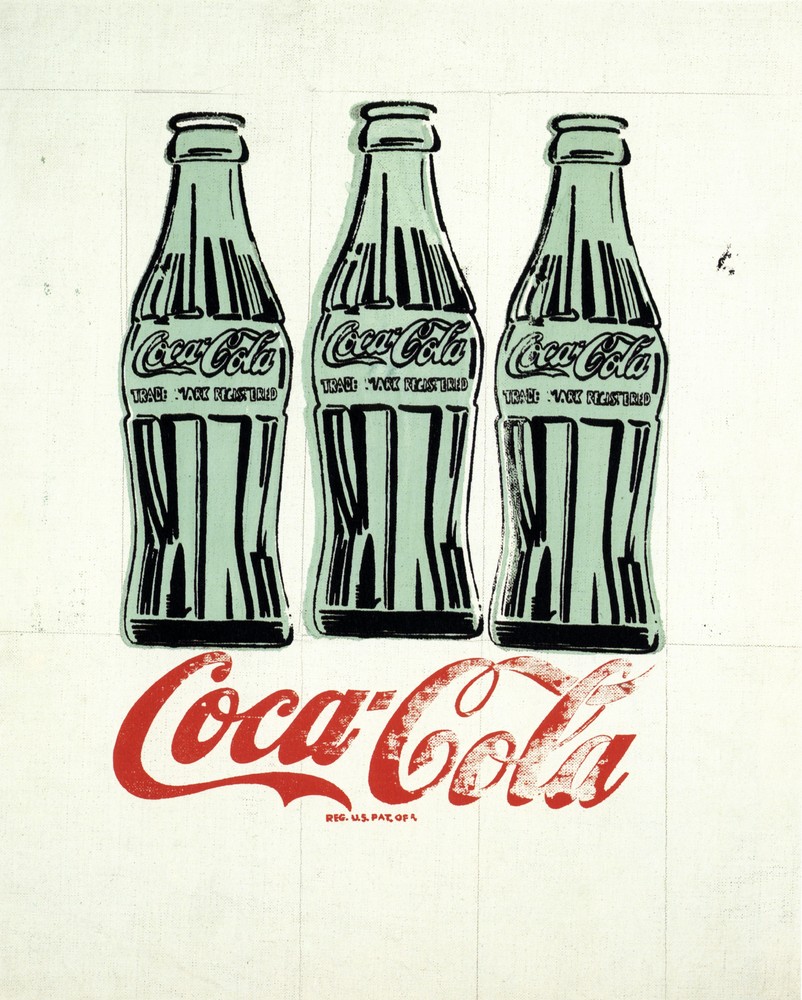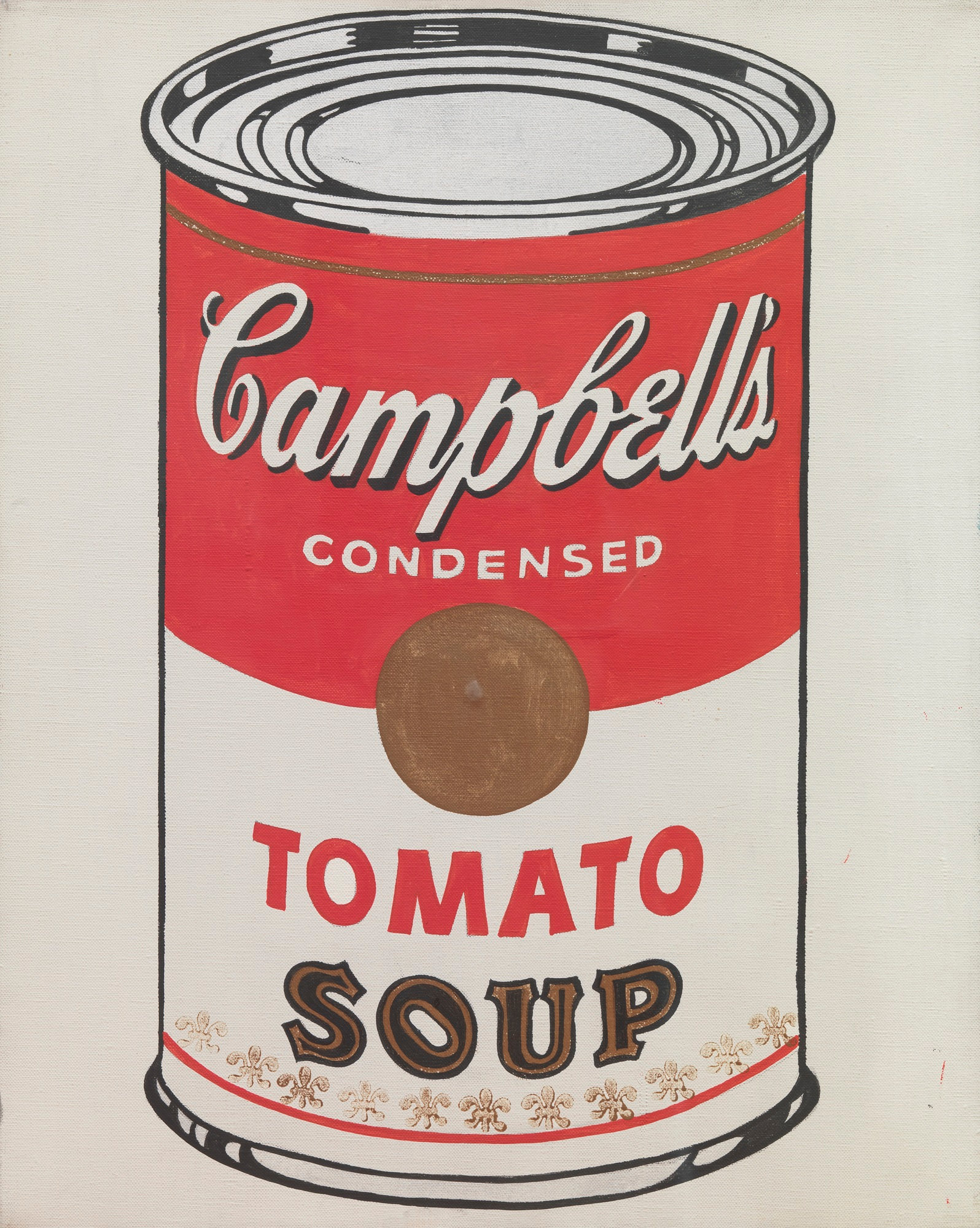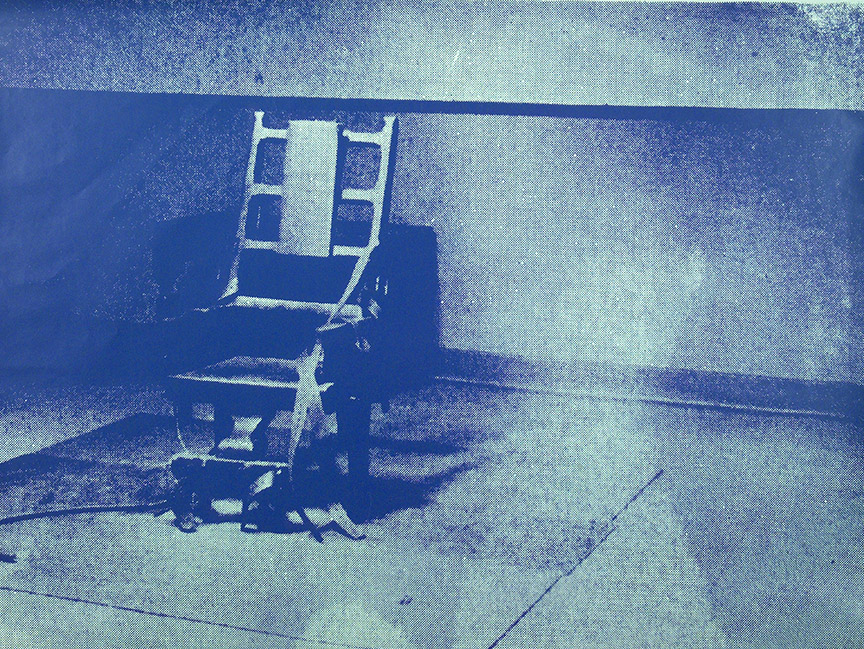9
Three Coke Bottles
Author: Andy Warhol
Year: 1962 Edit Add
Book: Postmodernism, or, The Cultural Logic of Late Capitalism
Three Coke Bottles
Author: Andy WarholYear: 1962 Edit Add
Book: Postmodernism, or, The Cultural Logic of Late Capitalism
Warhol began his artistic career as a commercial illustrator for shoe fashions and a designer of display windows in which various pumps and slippers figured prominently. Indeed, one is tempted to raise here -- far too prematurely -- one of the central issues about Postmodernism itself and its possible political dimensions: Andy Warhol's work in fact turns centrally around commodification, and the great billboard images of the Coca-Cola bottle or the Campbell's soup can, which explicitly foreground the commodity fetishism of a transition to late capital, ought to be powerful and critical political statements.
Warhol began his artistic career as a commercial illustrator for shoe fashions and a designer of display windows in which various pumps and slippers figured prominently. Indeed, one is tempted to raise here -- far too prematurely -- one of the central issues about Postmodernism itself and its possible political dimensions: Andy Warhol's work in fact turns centrally around commodification, and the great billboard images of the Coca-Cola bottle or the Campbell's soup can, which explicitly foreground the commodity fetishism of a transition to late capital, ought to be powerful and critical political statements.
Campbell’s Soup Cans
Author: Andy Warhol
Year: 1962 Edit Add
Book: Postmodernism, or, The Cultural Logic of Late Capitalism
Campbell’s Soup Cans
Author: Andy WarholYear: 1962 Edit Add
Book: Postmodernism, or, The Cultural Logic of Late Capitalism
Warhol began his artistic career as a commercial illustrator for shoe fashions and a designer of display windows in which various pumps and slippers figured prominently. Indeed, one is tempted to raise here -- far too prematurely -- one of the central issues about Postmodernism itself and its possible political dimensions: Andy Warhol's work in fact turns centrally around commodification, and the great billboard images of the Coca-Cola bottle or the Campbell's soup can, which explicitly foreground the commodity fetishism of a transition to late capital, ought to be powerful and critical political statements.
Warhol began his artistic career as a commercial illustrator for shoe fashions and a designer of display windows in which various pumps and slippers figured prominently. Indeed, one is tempted to raise here -- far too prematurely -- one of the central issues about Postmodernism itself and its possible political dimensions: Andy Warhol's work in fact turns centrally around commodification, and the great billboard images of the Coca-Cola bottle or the Campbell's soup can, which explicitly foreground the commodity fetishism of a transition to late capital, ought to be powerful and critical political statements.
Five Deaths on Orange
Author: Andy Warhol
Year: 1963 Edit Add
Book: Postmodernism, or, The Cultural Logic of Late Capitalism
Five Deaths on Orange
Author: Andy WarholYear: 1963 Edit Add
Book: Postmodernism, or, The Cultural Logic of Late Capitalism
Here, on the contrary, it is as though the external and colored surface of things -- debased and contaminated in advance by their assimilation to glossy advertising images -- has been stripped away to reveal the deathly black and-white substratum of the photographic negative which subtends them. Although this kind of death of the world of appearance becomes thematized in certain of Warhol's pieces, most notably the traffic accidents or the electric chair series, this is not, I think, a matter of content any longer but of some more fundamental mutation both in the object world itself -- now become a set of texts or simulacra -- and in the disposition of the subject.
Here, on the contrary, it is as though the external and colored surface of things -- debased and contaminated in advance by their assimilation to glossy advertising images -- has been stripped away to reveal the deathly black and-white substratum of the photographic negative which subtends them. Although this kind of death of the world of appearance becomes thematized in certain of Warhol's pieces, most notably the traffic accidents or the electric chair series, this is not, I think, a matter of content any longer but of some more fundamental mutation both in the object world itself -- now become a set of texts or simulacra -- and in the disposition of the subject.
Electric Chair
Author: Andy Warhol
Year: 1964 Edit Add
Book: Postmodernism, or, The Cultural Logic of Late Capitalism
Electric Chair
Author: Andy WarholYear: 1964 Edit Add
Book: Postmodernism, or, The Cultural Logic of Late Capitalism
Here, on the contrary, it is as though the external and colored surface of things -- debased and contaminated in advance by their assimilation to glossy advertising images -- has been stripped away to reveal the deathly black and-white substratum of the photographic negative which subtends them. Although this kind of death of the world of appearance becomes thematized in certain of Warhol's pieces, most notably the traffic accidents or the electric chair series, this is not, I think, a matter of content any longer but of some more fundamental mutation both in the object world itself -- now become a set of texts or simulacra -- and in the disposition of the subject.
Here, on the contrary, it is as though the external and colored surface of things -- debased and contaminated in advance by their assimilation to glossy advertising images -- has been stripped away to reveal the deathly black and-white substratum of the photographic negative which subtends them. Although this kind of death of the world of appearance becomes thematized in certain of Warhol's pieces, most notably the traffic accidents or the electric chair series, this is not, I think, a matter of content any longer but of some more fundamental mutation both in the object world itself -- now become a set of texts or simulacra -- and in the disposition of the subject.
 Log-in
Log-in Source type: picture
Source type: picture Source type: picture
Source type: picture Source type: picture
Source type: picture Source type: picture
Source type: picture Source type: picture
Source type: picture